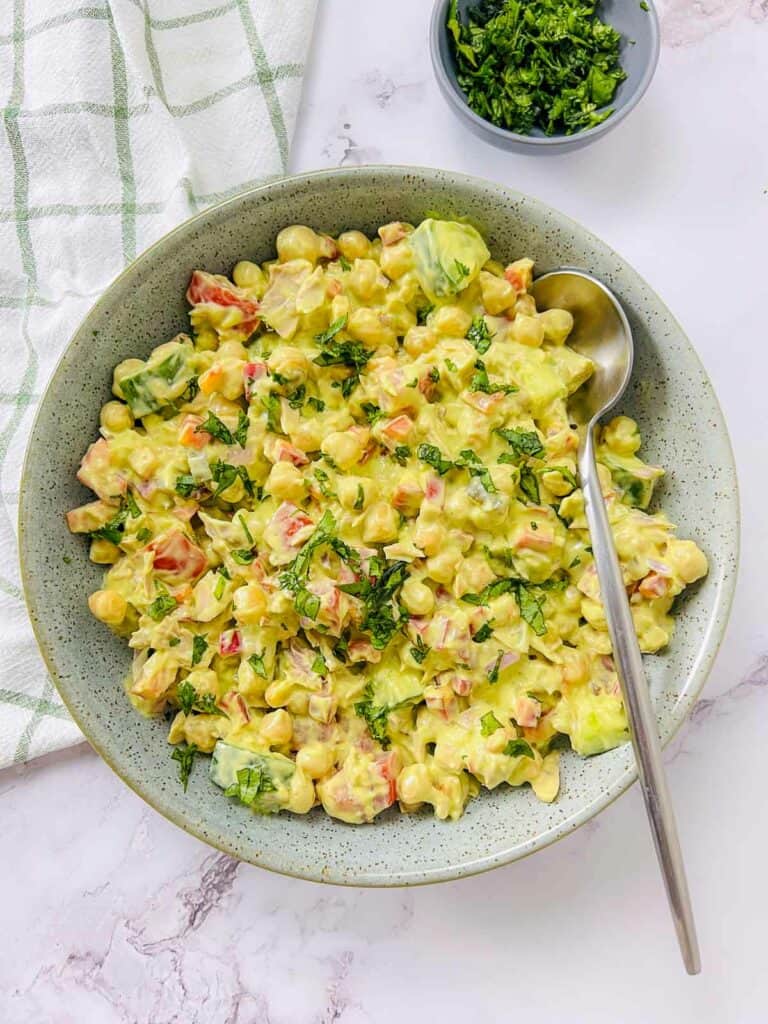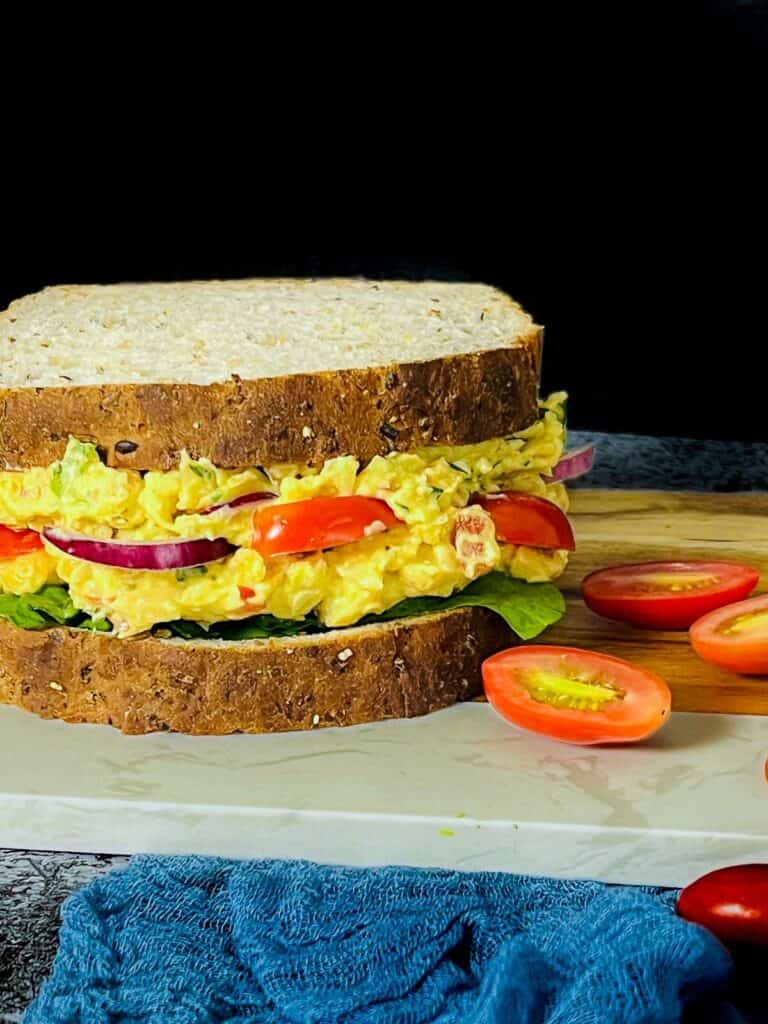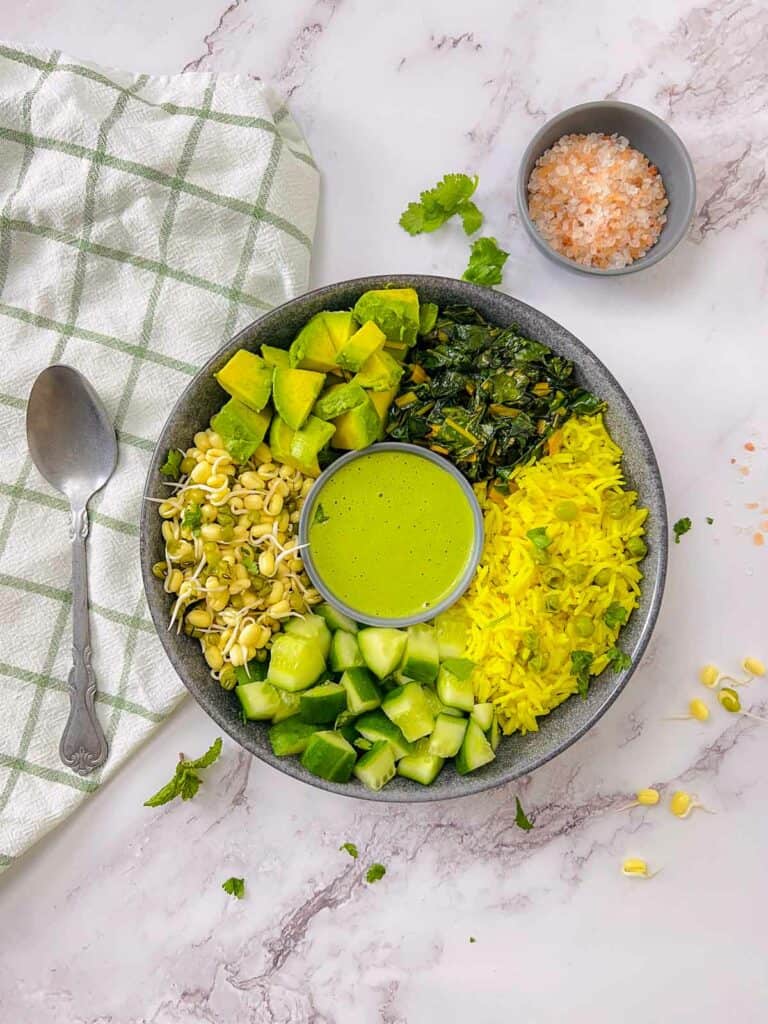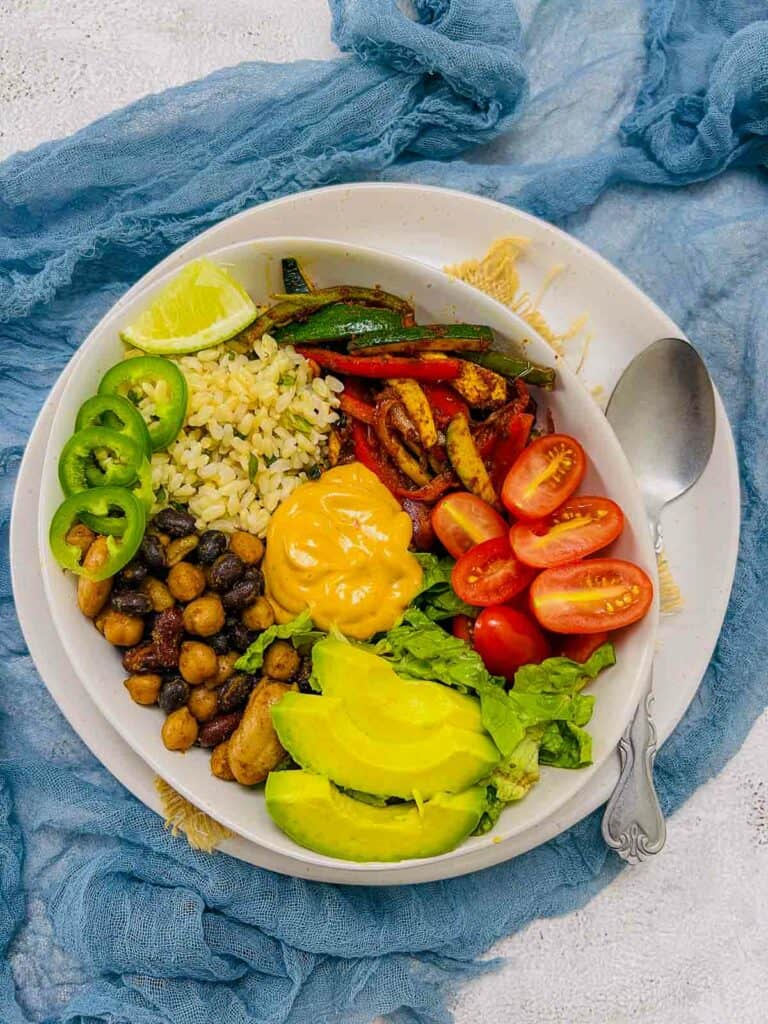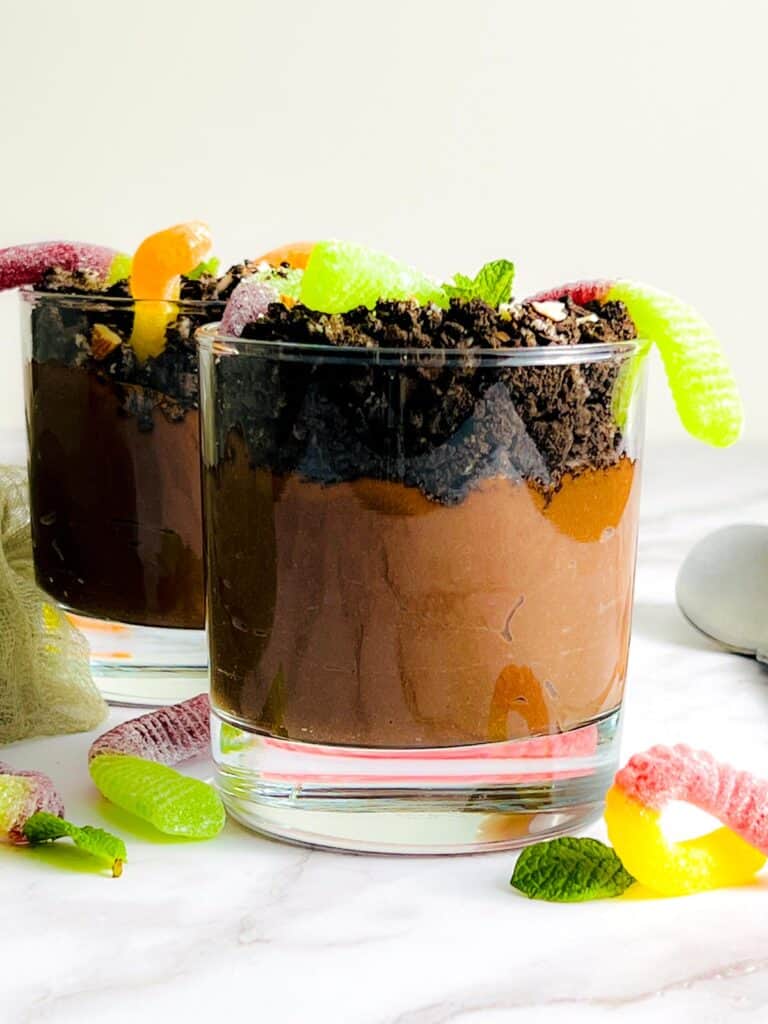Curd Rice Lunch Bowl: Ultimate South Indian Comfort Food
Curd rice is the ultimate South Indian comfort food featuring soft-cooked rice and tangy yogurt. This classic gets a makeover in this Curd Rice Bowl recipe. A flavorful potato fry and a cooling kosambari salad complete this satisfying and visually appealing meal.
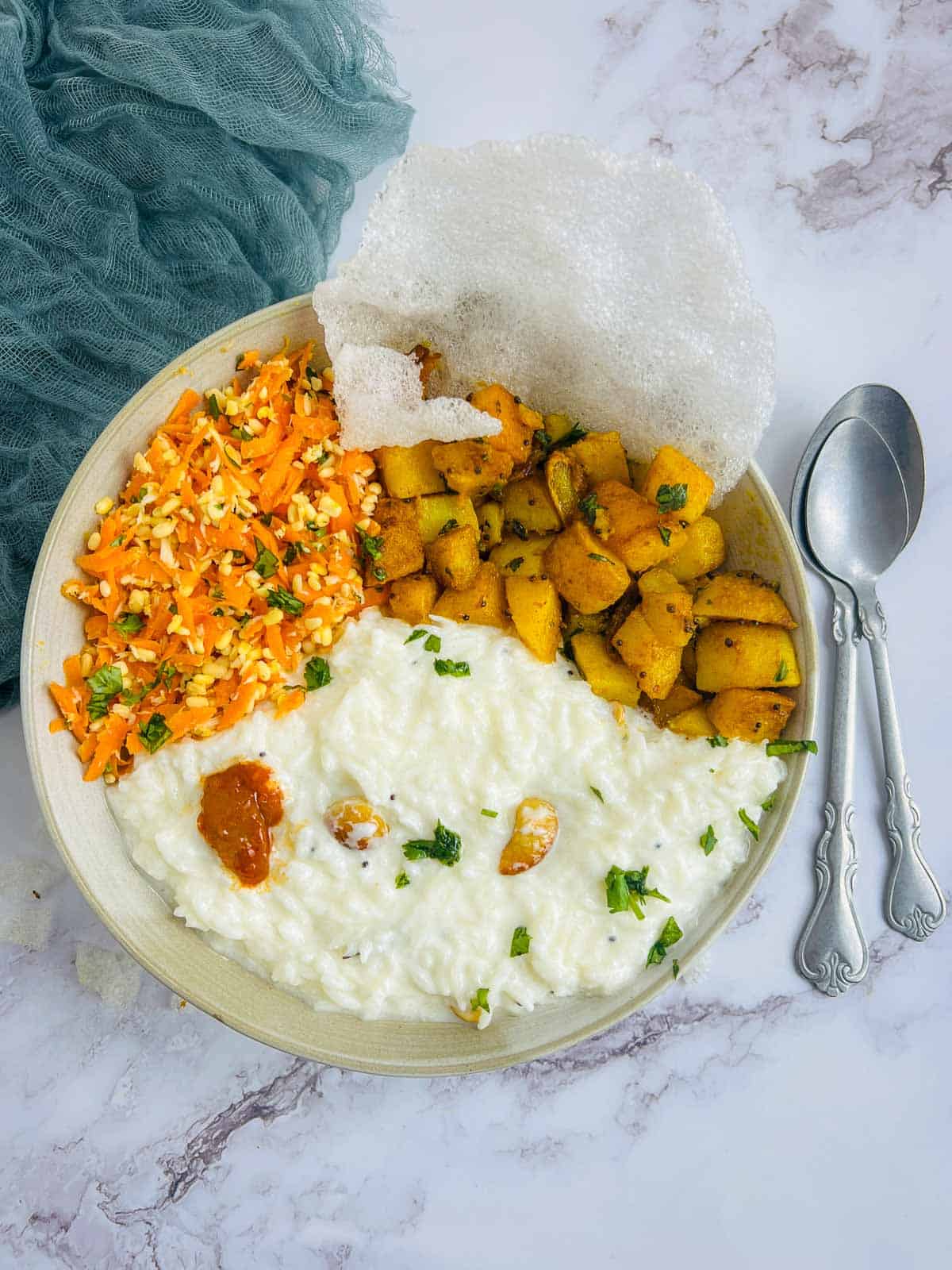
Disclosure: This post may contain affiliate links. This means I get a small commission if you decide to make a purchase through my links at no extra cost to you.
In Indian English, the word “curd” simply means homemade yogurt. Curd rice, in its most simple form, is soft cooked rice mixed with yogurt and seasoned with salt. It is a quintessential comfort food in South Indian cuisine.
This Curd Rice Bowl recipe features rice tossed with tangy yogurt and spices, a flavorful potato fry, and a refreshing kosambari salad. It’s a simple yet satisfying lunch option with vibrant aesthetics.
This recipe provides a complete and balanced meal in a single bowl, perfect for busy weekdays or a light and flavorful lunch.
Ingredients
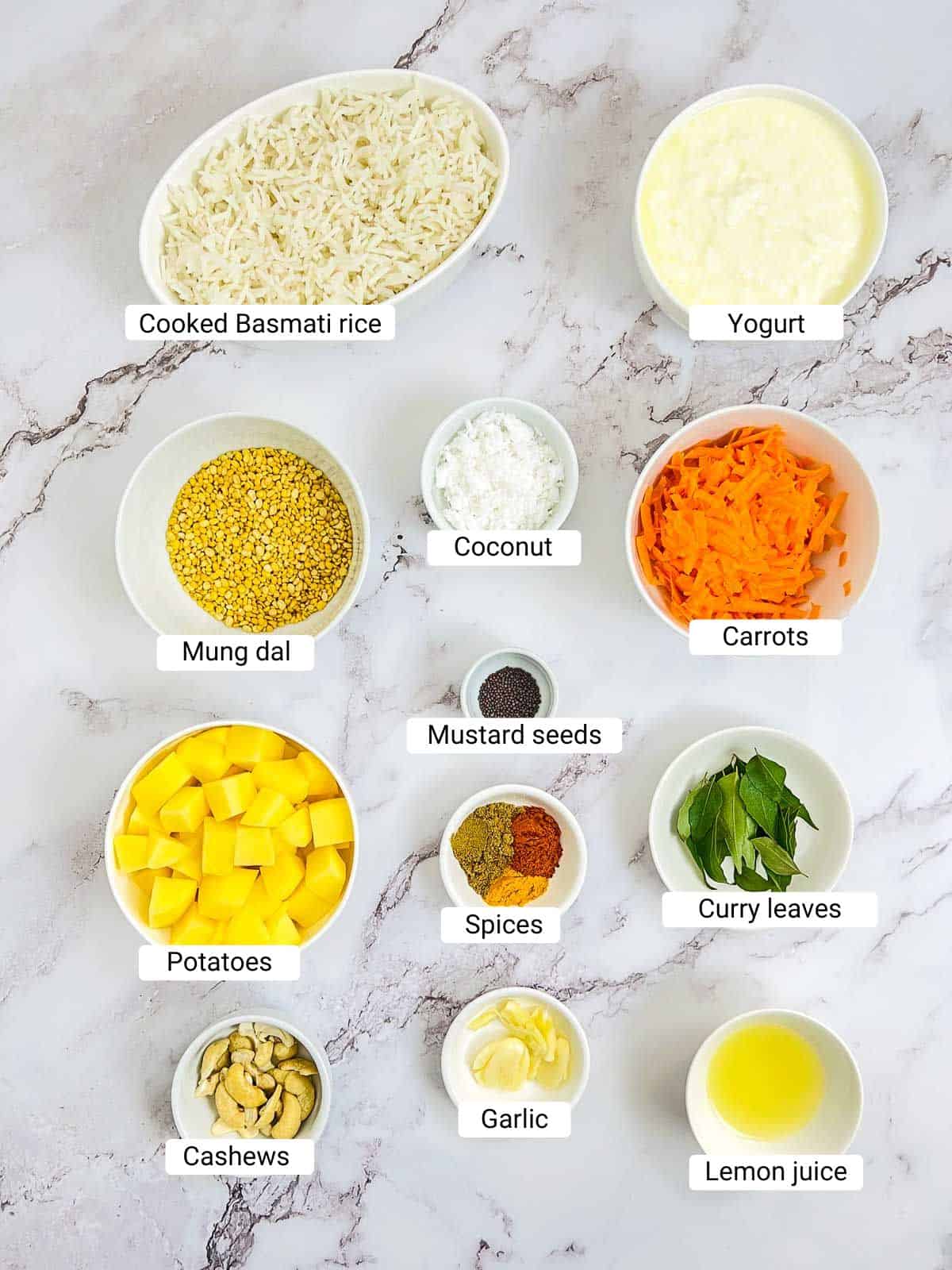
Basmati Rice: While I am using long-grain basmati rice, medium-grain rice like sona masuri will also work well.
Curd (Yogurt): For a richer flavor and creamier texture, choose full-fat yogurt. However, low-fat yogurt can be used as a lighter option.
Cashews: These add a delightful crunch and richness to the curd rice. However, it can be skipped for a nut-free version.
Potatoes: I love using either red potatoes or Yukon Gold for this dish. Cubing and soaking the potatoes in cold water helps remove excess starch, resulting in a crispier fry.
Moong Dal: Mung dal or yellow lentils are the key ingredient to make kosambari salad.
See the recipe card for the complete list of ingredients and quantities.
Step-by-step Instructions

Step 1: (Kosambari Salad) Take the moong dal in a bowl and wash it once. Add around one cup of water and soak the dal for 30 minutes. Drain all the water from the soaked dal and transfer it to a bowl. To this, add grated carrot, coconut, green chili, cilantro, lemon juice, and salt. Mix well and set it aside.
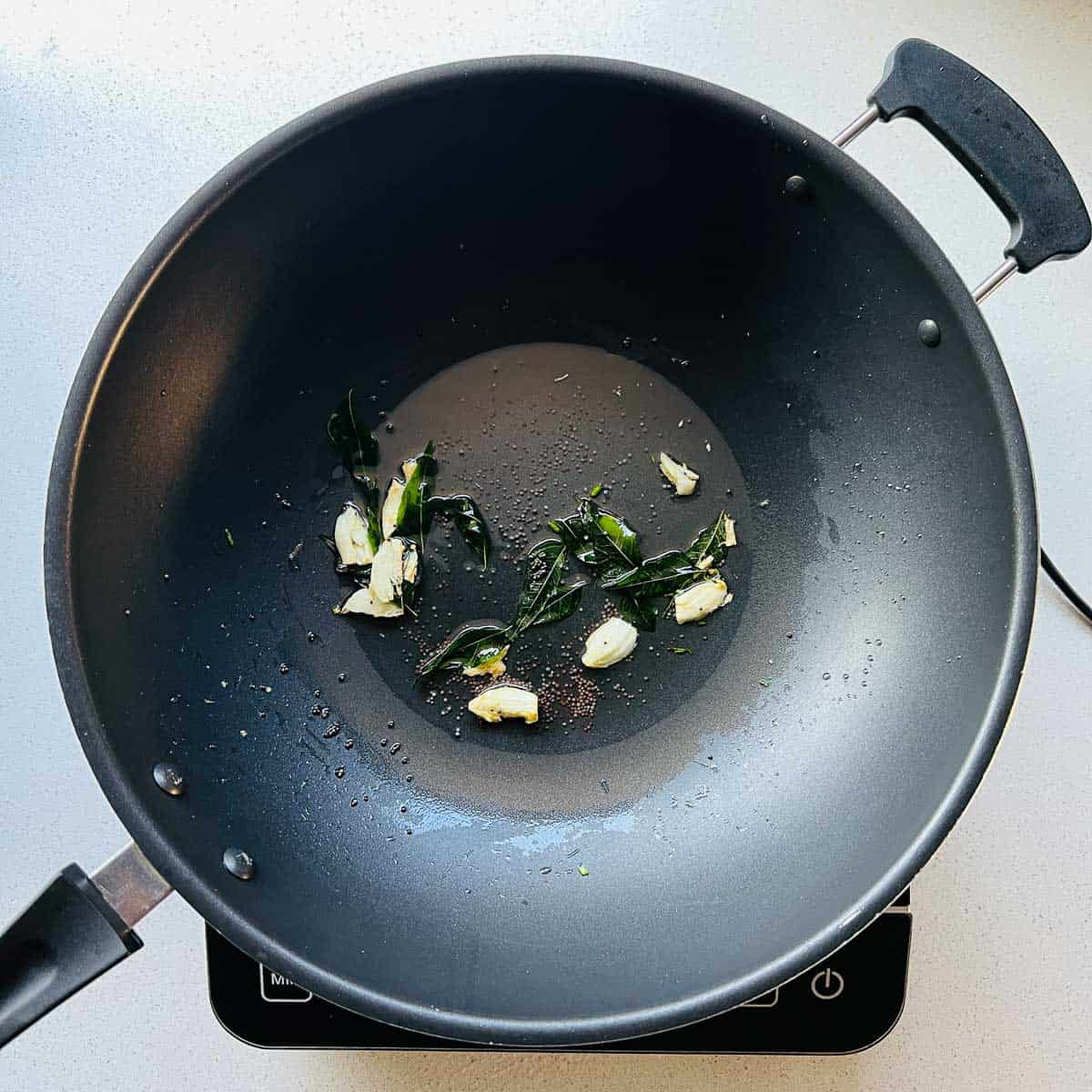
Step 2: (Potato Fry) Heat oil in a pan over medium heat. Add mustard seeds and let them splutter. Next, add the garlic, green chili, and curry leaves. Saute for a few seconds.
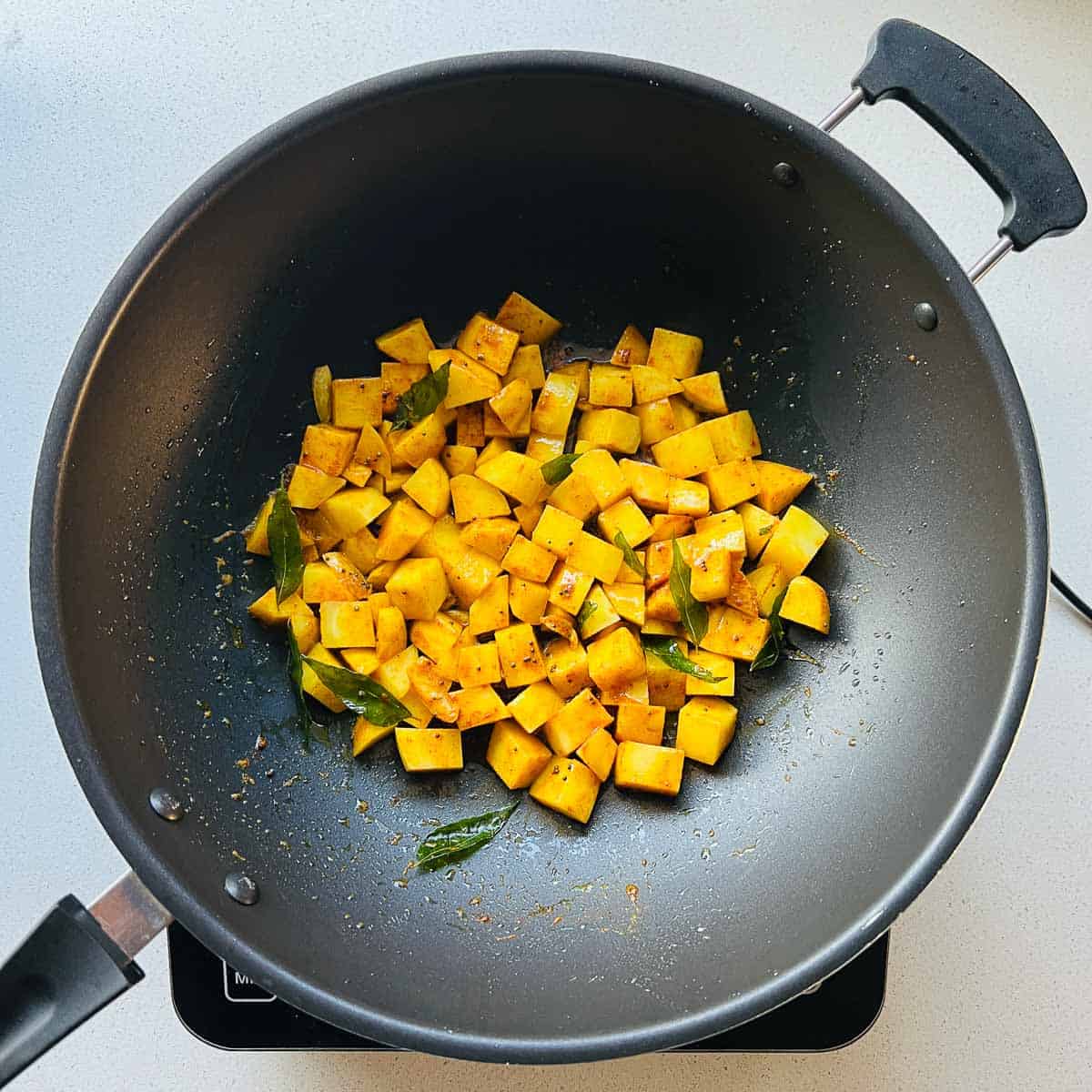
Step 3: Add potatoes, turmeric powder, chili powder, coriander powder, and salt. Mix well and reduce the heat.
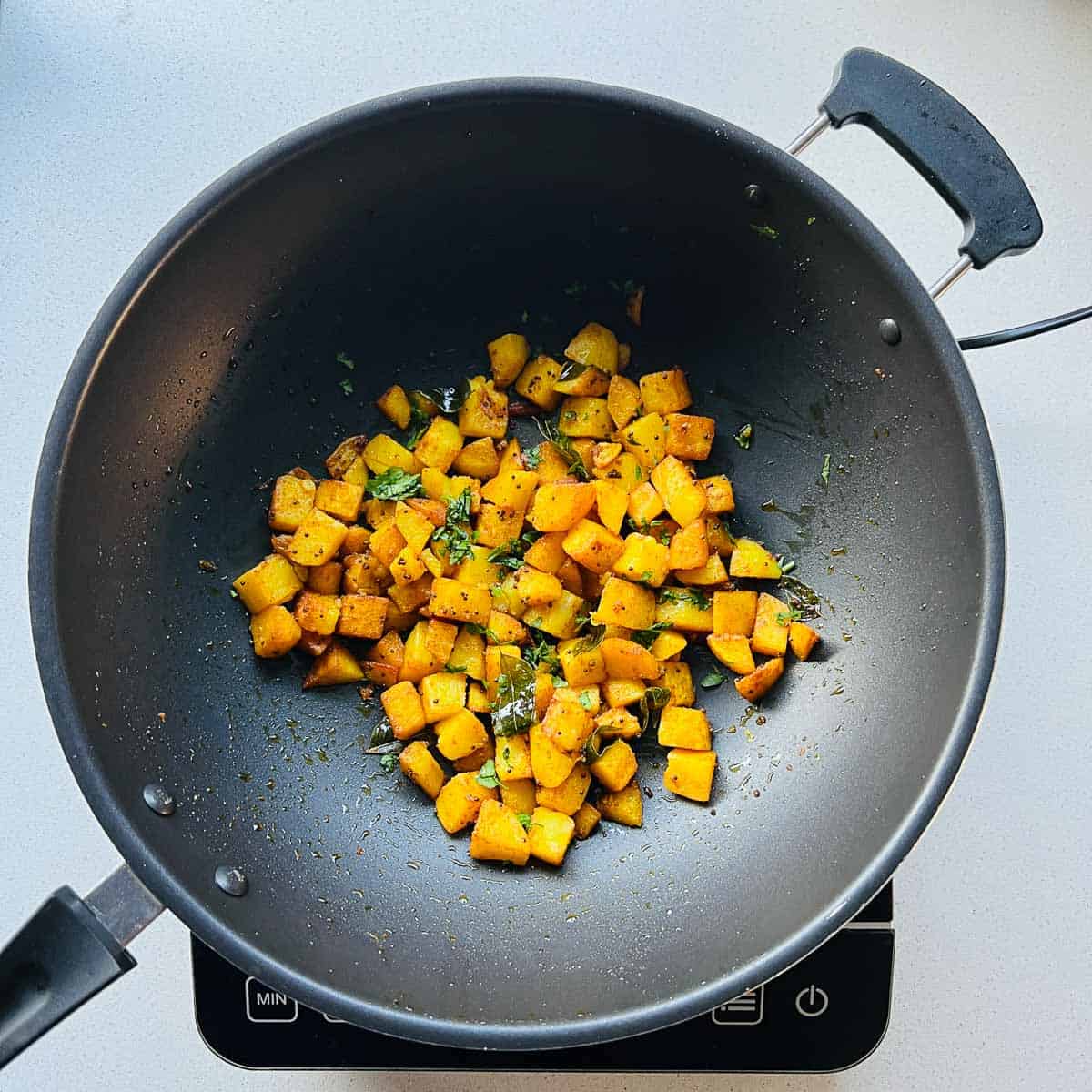
Step 4: Cover and cook the potatoes until they are cooked and begin to brown. Increase the heat and let the potatoes char slightly.
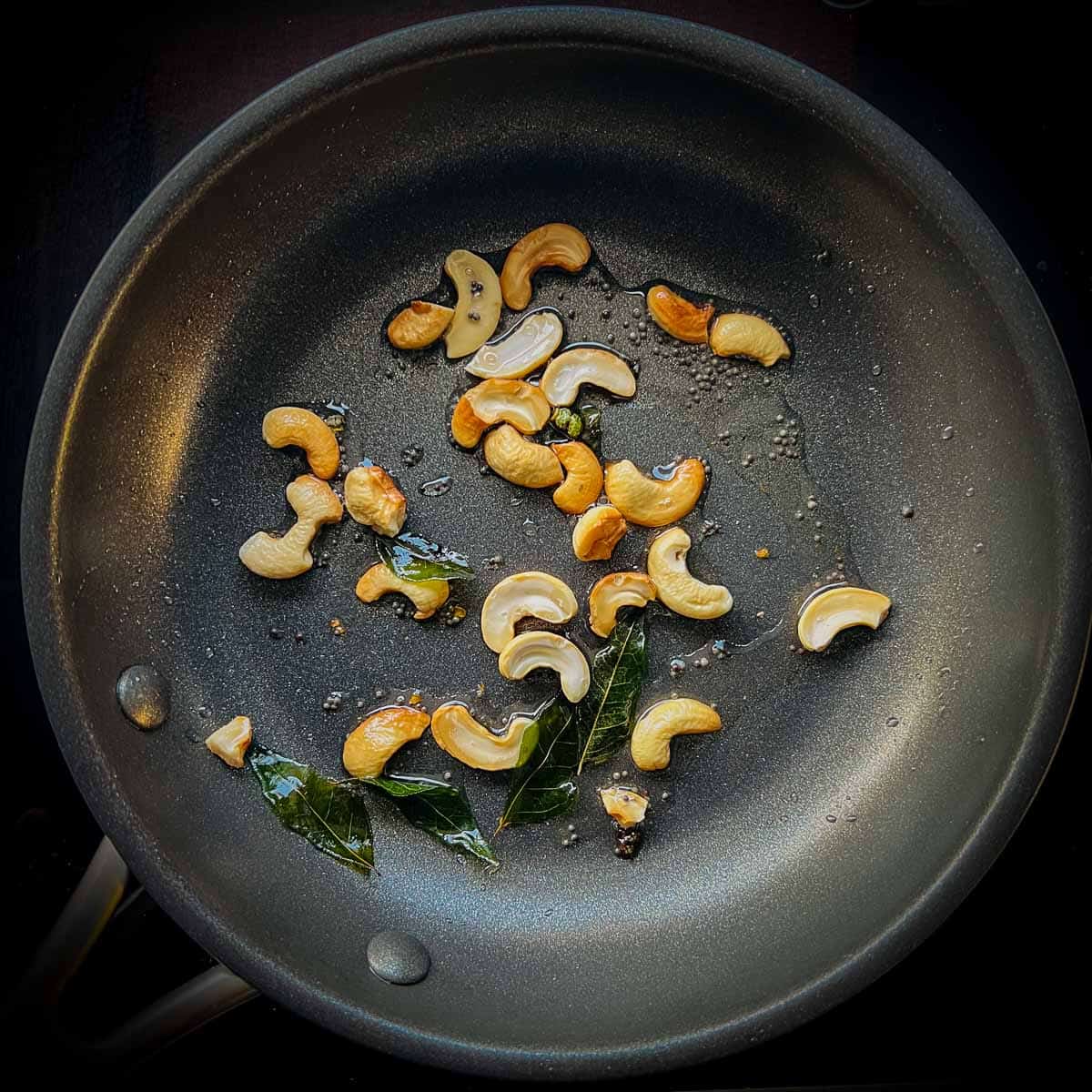
Step 5: (Curd Rice) Heat oil, add mustard seeds, and let them splutter. Add green chili and curry leaves. Fry for a few seconds. Add the cashews and saute for 1-2 minutes.
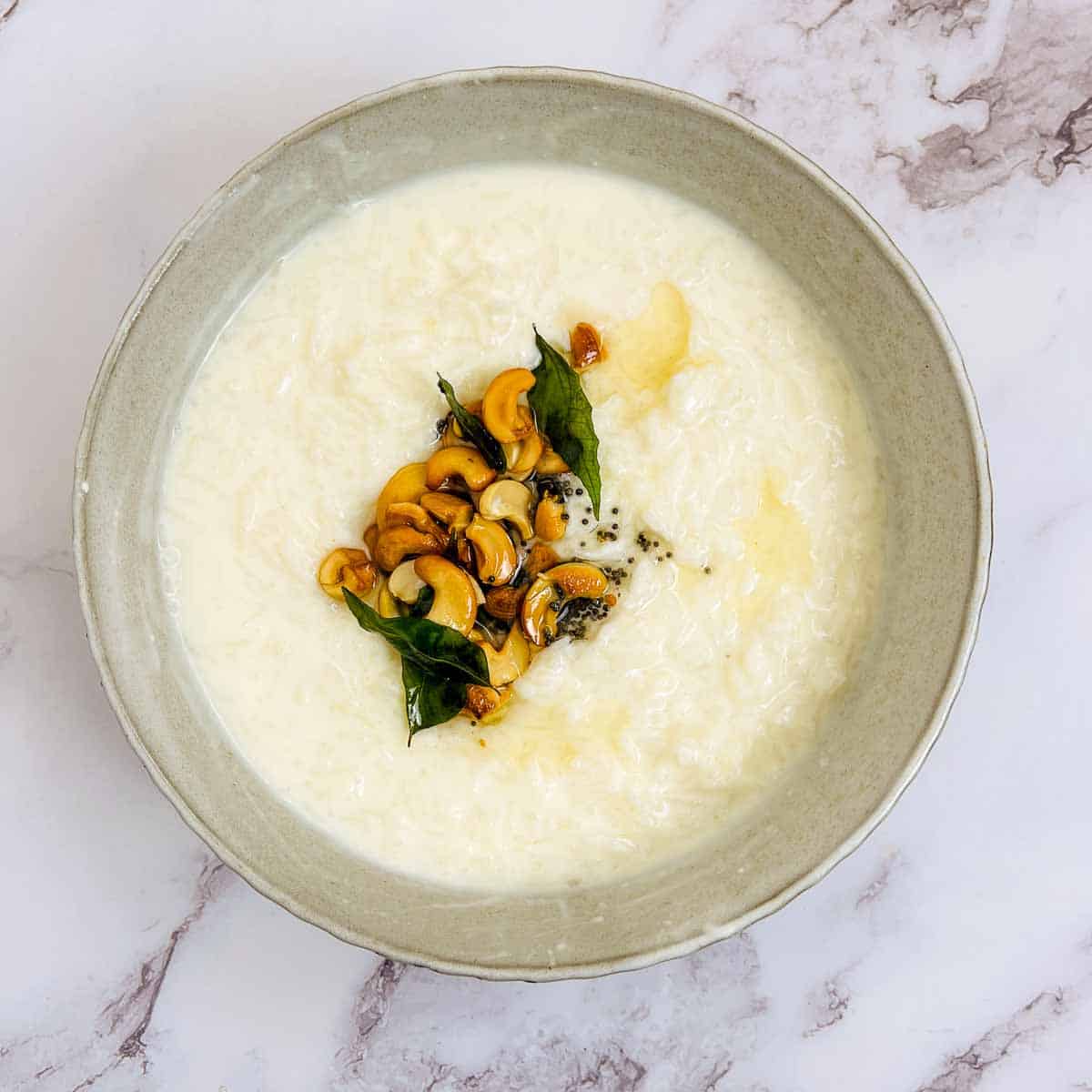
Step 2: In a large bowl, combine cooked rice and yogurt. Stir gently to mix well. Pour the tempering on the yogurt and rice mixture. Add salt and mix everything well.
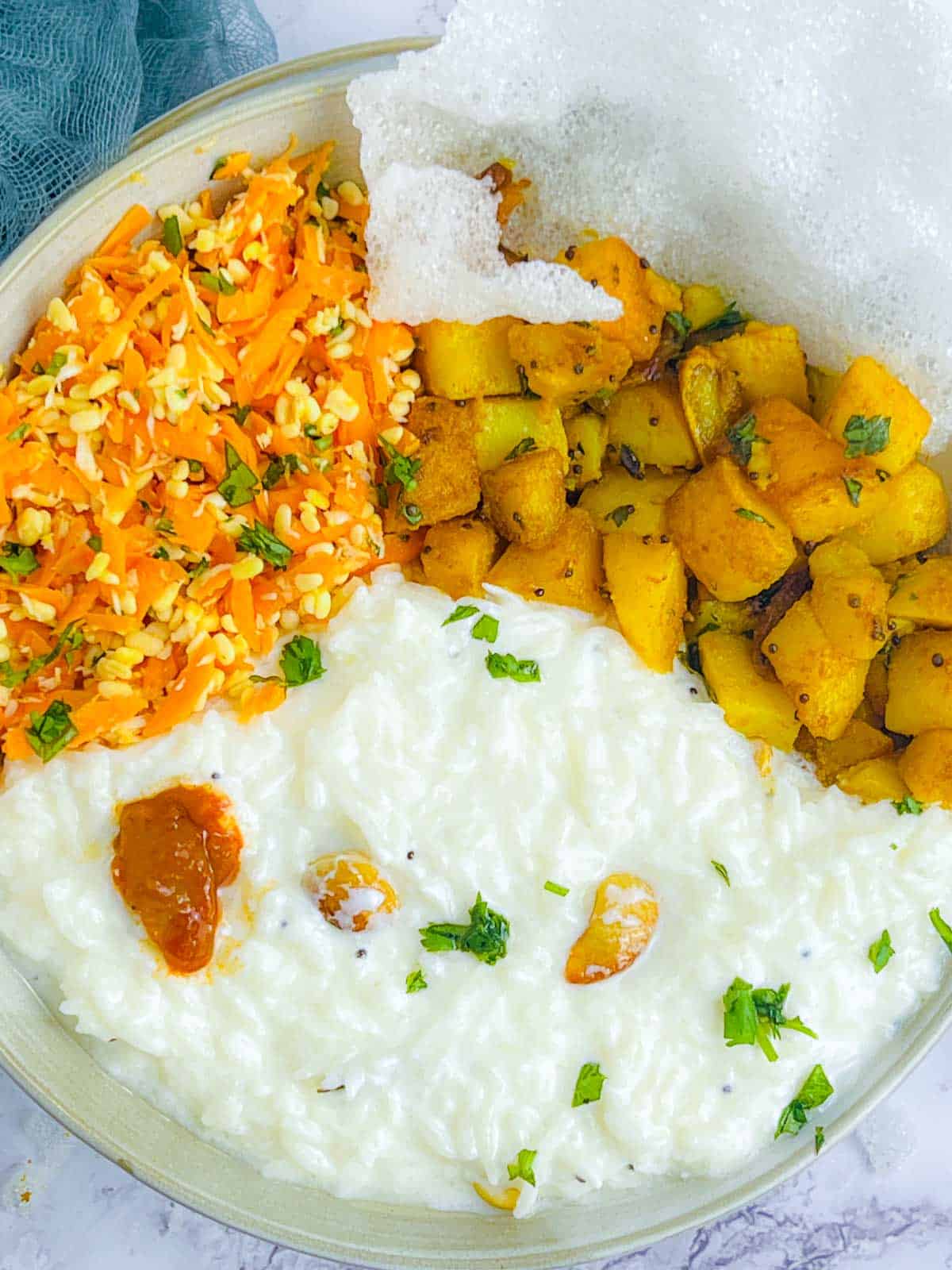
Step 7: (Assembly) Spoon curd rice into serving bowls or plates. Arrange sections of carrot mung dal kosambari, potato fry, and papad on the plate. Serve with pickles on the side.
Expert Tips
- Never mix hot rice with yogurt. Let the cooked rice cool completely to room temperature. This prevents the yogurt from separating and ensures a smooth texture.
- Soaking cubed potatoes in cold water for 10-15 minutes removes excess starch. This gives crispier edges and prevents the potatoes from sticking together while frying.
- Mung dal in kosambari salad is traditionally only soaked, not cooked. Soaking softens the lentils while adding a crunch to the salad.
- Pair the khichdi with masala papad instead of plain papad for an added kick.
Storage Tips
While curd rice bowl is best enjoyed fresh, leftovers can be stored for up to 2-3 days. Keep the curd rice, potato fry, and kosambari salad in separate airtight containers in the fridge.
Reheat the potato fry gently. Don’t reheat the curd rice; simply assemble a fresh bowl with chilled curd rice, warmed potato fry, and kosambari salad for a delicious leftover meal.
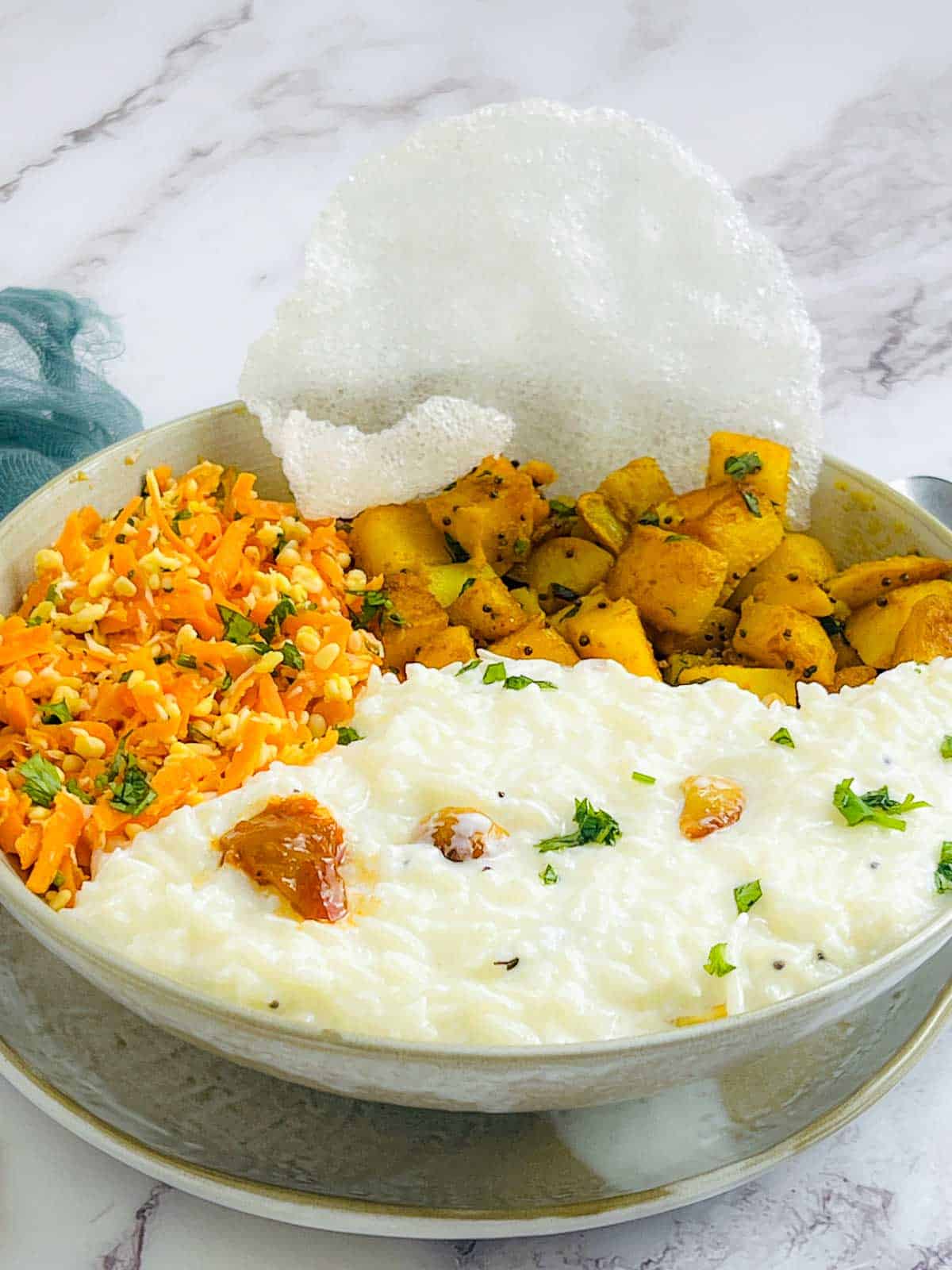
More Indian Recipes
- Looking for a quick & easy weeknight dinner? This Indian Yellow Lentil Buddha Bowl is your answer! Protein-packed lentils, roasted cauliflower, and a cooling raita dressing – all in under an hour.
- Turn weeknight dinners into cozy escapes with a warm bowl of Palak Khichdi! This vegetarian recipe combines rice and lentils with vibrant spinach for a complete and flavorful meal.
- Start your day right with these savory Indian-inspired red lentil pancakes! They’re vegan, gluten-free, and oh-so-delicious. Pair them with flavorful cumin-spiced potatoes for an impressive breakfast or brunch.
If you tried this Curd Rice Bowl Recipe or any other recipe on my website, please leave a 🌟 star rating and let me know how it went in the 📝 comments below.

Equipment
Ingredients
For the Curd Rice:
- 2 cups cooked basmati rice any long-grain rice
- 2 cups plain yogurt
- 2 teaspoons oil
- ½ teaspoon mustard seeds
- ¼ cup cashews
- 1 green chili chopped (optional)
- 4-5 curry leaves
- ¾-1 teaspoon salt adjust as per taste
For the Kosambari Salad:
For the Potato Fry:
- 2 large potatoes peeled, cubed, and placed in cold water
- 2 tablespoon oil
- ½ teaspoon mustard seeds
- 2 cloves garlic crushed
- 1 sprig curry leaves
- 1 green chili chopped (optional)
- ¼ teaspoon turmeric powder
- ½ teaspoon red chili powder
- ½ teaspoon ground coriander
- ½ teaspoon salt adjust as per taste
Everything Else:
Instructions
Make the Carrot Mung Dal Kosambari:
- Take the moong dal in a bowl and wash it once. Add around one cup of water and soak the dal for 30 minutes. Drain all the water from the soaked dal and transfer it to a bowl.
- To this, add grated carrot, coconut, green chili, cilantro, lemon juice, and salt. Mix well and set it aside.
Make the Potato Fry:
- Peel and cube the potatoes into small pieces. Place them in cold water for 10 minutes.
- Heat oil in a pan over medium heat. Add mustard seeds and let them splutter. Next, add the garlic, green chili, and curry leaves. Saute for a few seconds.
- Drain all the water from the potatoes and add them to the pan. Add turmeric powder, chili powder, coriander powder, and salt. Mix well and reduce the heat. Cover and cook the potatoes until they are cooked and begin to brown. Turn off the heat.
Make the Curd Rice:
- In a large bowl, combine cooked rice and yogurt. Stir gently to mix well.
- Heat oil in a small pan over medium heat. Add mustard seeds and let them splutter. Add green chili and curry leaves. Fry for a few seconds.
- Add the cashews and saute for 1-2 minutes. Turn off the heat and pour the tempering on the yogurt and rice mixture. Add salt and mix everything well.
Assemble the Bowl:
- Spoon curd rice into serving bowls or plates. Arrange sections of carrot mung dal kosambari, potato fry, and papad on the plate. Serve with pickles on the side.
Notes
- Never mix hot rice with yogurt. Let the cooked rice cool completely to room temperature. This prevents the yogurt from separating and ensures a smooth texture.
- Soaking cubed potatoes in cold water for 10-15 minutes removes excess starch. This gives crispier edges and prevents the potatoes from sticking together while frying.
- Mung dal in kosambari salad is traditionally only soaked, not cooked. Soaking softens the lentils while adding a crunch to the salad.

